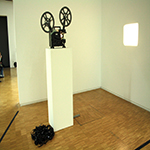Euroacademia Conferences
 Europe Inside-Out: Europe and Europeanness Exposed to Plural Observers (9th Edition) April 24 - 25, 2020
Europe Inside-Out: Europe and Europeanness Exposed to Plural Observers (9th Edition) April 24 - 25, 2020 Identities and Identifications: Politicized Uses of Collective Identities (9th Edition) June 12 - 13, 2020
Identities and Identifications: Politicized Uses of Collective Identities (9th Edition) June 12 - 13, 2020 8th Forum of Critical Studies: Asking Big Questions Again January 24 - 25, 2020
8th Forum of Critical Studies: Asking Big Questions Again January 24 - 25, 2020 Re-Inventing Eastern Europe (7th Edition) December 13 - 14, 2019
Re-Inventing Eastern Europe (7th Edition) December 13 - 14, 2019 The European Union and the Politicization of Europe (8th Edition) October 25 - 26, 2019
The European Union and the Politicization of Europe (8th Edition) October 25 - 26, 2019 Identities and Identifications: Politicized Uses of Collective Identities (8th Edition) June 28 - 29, 2019
Identities and Identifications: Politicized Uses of Collective Identities (8th Edition) June 28 - 29, 2019 The European Union and the Politicization of Europe (7th Edition) January 25 - 26, 2019
The European Union and the Politicization of Europe (7th Edition) January 25 - 26, 2019 7th Forum of Critical Studies: Asking Big Questions Again November 23 - 24, 2018
7th Forum of Critical Studies: Asking Big Questions Again November 23 - 24, 2018 Europe Inside-Out: Europe and Europeanness Exposed to Plural Observers (8th Edition) September 28 - 30, 2018
Europe Inside-Out: Europe and Europeanness Exposed to Plural Observers (8th Edition) September 28 - 30, 2018 Identities and Identifications: Politicized Uses of Collective Identities (7th Edition) June 14 - 15, 2018
Identities and Identifications: Politicized Uses of Collective Identities (7th Edition) June 14 - 15, 2018
Eastern Europe as Other in Silent Cinema
-
-

-
Presentation speakers
- Adina Zidon, Lehman College, USA
- Download presentation
Abstract:
The following study will discuss depictions of Eastern Europe through the medium of silent film. My goal is to explore what distinguishes Eastern Europe from Western Europe and how early cinema has played a vital role in modern understanding of this divide. I will focus on three distinct images of the “orient:” traditional Judaism, vampires, and the nascent Soviet Union. It is beyond the scope of this study to fully delve into the cultural and ideological clashes of east versus west throughout history and even within the bounds of individual episodes in the past century. Instead, I have chosen to examine some of the most recognizable elements of what constitutes Eastern Europe in popular consciousness, and I will do it using the medium which has been responsible for much of our understanding – whether accurate or not – of the East. Like any other art form, cinema reflects the time in which it was made and betrays with varying degrees of subtlety the biases, fears, hopes, and desires of the artist. Silent cinema’s brief tenure as the world’s only non-print mass media impacted its audience in ways that are beyond the comprehension of the average person today who can access all the movies and information in the world through the phone in their pocket, yet old stereotypes have not necessarily suffered at the hands of 21st century technology and research. I could never expect to explain why this is so, but it is my intention to help clarify some reasons why contemporary cinema of the years encompassing the First World War, the Russian Revolution, and their aftermaths might be partially responsible for our perceptions.
-
Related Presentations

Eastern Europe - Integral Part of Europe. Retrospective into the Future
- Gerhard Eichweber

















